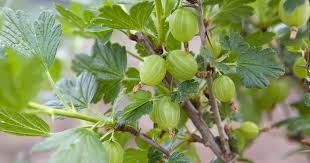Pruning fruit bushes, such as gooseberries and currants, can seem challenging, but it’s a necessary task to keep your plants healthy and productive. While pruning diagrams in books may look straightforward, working with real, unshaped bushes requires a different approach. In the northern hemisphere, winter is the ideal time for pruning, as the plants are dormant, though this task can be done any time during their resting period before early spring.
Why Prune Fruit Bushes?
Pruning serves multiple purposes. First, it helps to increase airflow and sunlight penetration into the center of the bush, reducing the risk of diseases and encouraging stronger growth. By maintaining a clear center, you also make it easier to harvest the fruit later in the season. Additionally, pruning ensures the branches remain clear of the ground to prevent fruit from touching the soil, which could lead to rot.
You’ll also shape the bush during pruning. For bushes with multiple stems, or “stools,” your goal is to create a framework of branches that grow outward from the center. For those grown on a single leg, the aim is to maintain a goblet shape. In both cases, you want a balanced structure with up to ten main branches, each bearing short spurs for fruiting. Finally, pruning encourages new growth by removing old, less productive wood (usually after three or four years).
Pruning Gooseberries, Redcurrants, Whitecurrants, and Worcesterberries
Begin by ensuring that the leg (if your bush has one) is clean. Remove any shoots growing from the base up to where the bush branches out. If there are suckers at the base, they should ideally be pulled off in summer while soft, but if some were missed, cut them away now.
Next, remove any dead or diseased branches. This will set you up for the next stage—pruning for shape. Remove any branches that are too low, which could become entangled in weeds or rest the fruit on the ground. To keep the bush open and airy, trim any crossing or congested branches that might hinder airflow or rub together, creating potential for disease.
When it comes to the older stems, aim for a mix of one, two, and three-year-old wood. The oldest stems (over three years old) should be cut out to make space for new growth. This keeps the bush productive and rejuvenated.
Cutting Back Main Stems and Side-Shoots
Now, focus on the main stems or “leaders.” These should be cut back by about half of their new growth from the previous year. If the bush has outgrown its space, you can replace an old leader by allowing a lower side-shoot to grow and take its place. Simply cut back the old leader to just above the side-shoot.
Remember that gooseberries and currants produce fruit on small spurs along older wood and, for gooseberries, more heavily at the base of last year’s side-shoots. To optimize fruit production, prune the side-shoots back to two buds. This encourages the plant to focus energy on producing fruit from these buds.
Special Considerations for Different Bush Varieties
Different cultivars may need slight adjustments during pruning. For example, some gooseberries, like ‘Careless,’ tend to spread out, and pruning should focus on cutting back to inward or upward-facing buds to prevent branches from growing downward. More upright cultivars, however, can be pruned in the usual way, with cuts made just above outward-facing buds.
Conclusion
Winter pruning of gooseberries and currants is a vital task for ensuring healthy, productive bushes. By carefully shaping the bush, removing dead or diseased wood, and encouraging new growth, you’ll improve the overall vigor of the plant and increase your harvest. While the process may seem daunting, following these steps will leave your bushes thriving and ready to produce high-quality fruit in the coming season.
